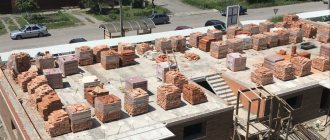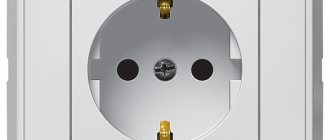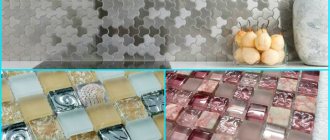Repairs are always troublesome and expensive. It is necessary that the efforts of the apartment owners are not in vain. Designers think through every smallest detail in the decoration, design, and furnishings of the apartment. Only in this case, home renovation will bring joy and satisfaction.
Before you start renovating, you need to think carefully about all the options: decide what style you like, what this or that style solution implies in the design, what furniture is suitable for each room and, of course, choose the right materials for finishing the walls, floors and ceilings. Don't have the courage to decide on something? Then you definitely need to contact the specialists of our channel and the online store Mebel169.ru, who will answer any of your questions and help you make your choice.
General recommendations for wall decoration
An incredible number of types of building materials, techniques and finishing methods greatly facilitate the entire renovation process. But you need to know a few general rules before you start remodeling.
- Environmental friendliness of materials. An important aspect that must be paid attention to. This is especially true if there are allergies in the family. And in other cases it is better if the material does not emit any toxic substances or odors.
- Fire resistance. The modern construction market offers many types of finishing materials tested for flammability, so there is plenty to choose from.
- A special approach to each room separately. Ceramic tiles on a bedroom wall will be completely out of place, and paper wallpaper in the kitchen may be impractical.
- Cost of materials. Here it is up to the owner to decide how much he is willing to spend. But remember that the most expensive is not always the best. It is quite possible to choose a high-quality budget option.
- The ease of finishing work is of no small importance, especially if you are doing the repairs yourself.
- Aesthetics. Everything must fit together, nothing can fall out of the overall design. Each type of finish suits its own style.
Decorative plaster
Like paints, there are a great variety of decorative plasters on sale now, in various price categories, from affordable to premium. Once upon a time, plaster was perceived exclusively as a facade material, and in rooms it carried a purely functional load - leveling walls. Now it is equally in demand both outside and indoors, which is greatly facilitated by their wide variety on the finishing materials market. This finishing coating is used primarily for decorating surfaces in common areas - living rooms, halls, halls, corridors. It can be found less often in bedrooms, kitchens and bathrooms, but these are more a feature of perception than a limitation due to characteristics. Regardless of the specific type, any decorative plaster is a plastic mass applied to the wall using a spatula or a specialized tool (malka, trowel). After drying, the surface becomes monolithic and resistant to both abrasion and moisture. Without going into subspecies and brands, decorative products can be divided into several categories.
- Textured (pebble) - the most “folk” variety of decorative plaster, the first to appear in Moscow and the region, and from there it gradually “spread” across the country - bark beetle. This is how they “christened” the plaster mixture based on a cement binder with the addition of natural stone granulate of a fraction of 1-5 mm. Bark beetle with a large fraction is used on facades, and with a fine fraction it is used as plaster for interior wall decoration. The material received this name because of the characteristic pattern - when applied to the wall, the pebble is rolled under the sand, and the first “pattern” was just longitudinal stripes, reminiscent of the cavities left by wood-boring beetles (bark beetles).
Later they began to “twist the bark beetle” both in a circle (sun) and in other directions, but the “nickname” stuck. On the facade, textured plasters are used as a finishing layer for insulation (SFTK), while in the interior they are applied directly to the rough plaster. Initially, this type of material was produced only on the basis of cement and with natural granules; now both acrylic and silicone mixtures with artificial filler are on sale. Applying stone decorative plaster requires certain skills, but if you wish, you can master the technology and decorate the walls yourself; there are plenty of videos on the Internet, including on the forum. The plastered surface is subsequently painted with acrylic or silicone paint. To get a two-color wall, you first need to go over it with a fluffy, well-moistened roller, and after drying, lightly roll it with a smooth, foam rubber one. There may be one color, but of different saturation, which will look unusual and emphasize the design.
- Relief - if in pebble plasters the pattern is obtained due to the filler included in the composition, then relief plasters are a homogeneous mass. And the texture of the surface is imparted during application using a special technique, or with the help of specialized tools. In the first case, the mass is applied with a spatula or small spoon in deliberately uneven strokes, which are then smoothed. In the second, the process resembles applying starting putty in a thick, uniform layer, and the relief is created using rollers or impressions. In addition to specialized decorative plasters, the texture is also created using ordinary gypsum putties suitable for the thickness of the layer, which is much cheaper. After drying, the walls are painted, as when applying pebble plasters.
- Smooth (thin-layer) - these include the legendary Venetian plaster, which is used to imitate marble cladding on the walls. The Venetian is demanding of the base; it must be not just smooth, but ideal, otherwise it will simply not be possible to finish the wall well. The plaster is applied with a stainless trowel, in several stages, using a special technique with careful smoothing of each layer, but these layers are of minimal thickness. The combination of application technique and composition, including natural marble flour and lime, gives the effect of depth and mirroriness of the walls. A well-applied Venetian can look almost like a mirror, and the surface is indistinguishable from stone. But the material itself is far from budget, and not everyone can afford the cost of a square, but to do it yourself you need to try very, very hard and it is not a fact that attention will be attracted by the beauty and not the wretchedness of the result. At the final stage, the walls are coated with special wax, which protects the surface from moisture and dirt, so that the plaster can be applied not only in residential and common areas, but also in damp ones. Another thin-layer moisture-resistant plaster that imitates a stone surface is Moroccan tadelakt, which can be used to decorate not only walls in bathrooms, showers and swimming pools, but even countertops and sinks.
- Liquid wallpaper - they are not usually classified as decorative plasters, but the material is similar to wallpaper only with cellulose in its composition. In terms of technology of application and visual effect, this is precisely decorative interior plaster, applied to the prepared surface using a spatula or mortar. After hardening, the mass forms a monolithic, silky surface with slight relief on the walls. What distinguishes liquid wallpaper from decorative plaster is its lower strength, but much greater elasticity. Their use is most relevant on surfaces that can “play”, when covering walls with rough slabs for leveling. The coating hides imperfections of the base well and can be applied without prior putty. But to be on the safe side, the walls need to be coated with a specialized primer, tinted to match the color of the mass.
It is worth considering that structural plaster on the inside is less practical than textured plaster and it is almost impossible to clean it from dirt, but you can simply repaint it at any time.
Wall panels
There are also many varieties of wall panels. Each of them has its own advantages.
- Panels made of PVC are quite cheap, but at the same time they are practical: easy to clean, resistant to moisture, easy to install. Perfect for the bathroom.
- Chipboard panels (MDF ) will look good in the living room, hallway, and large hall. Their advantage is their diversity, i.e. variety of color shades.
- 3D panels are very original in their texture and aesthetics This is a tribute to modern technology. Glass, bamboo, reed, plastic, aluminum panels will create a unique interior that will impress everyone around with its unusualness.
Dye
Before the advent of paint, walls not only in villages, but also in cities were whitewashed with either lime or chalk, but in apartments it was customary to add dye and use stencils. A little later, with the advent of oil paint, “panels” up to half or 2/3 of the wall in kitchens and bathrooms became popular. Painting walls has long been a budget alternative to wallpaper when repairs need to be done but there is no money. Today, with the popularization of Scandinavian style, as well as minimalism, in private houses, walls are increasingly simply painted over fiberglass or putty. Using modern paints, you can get not only a glossy or matte smooth surface, but also a chameleon effect, relief, and also an imitation of natural materials - concrete, stone, fabric, wood. There is decorative finishing of interior walls with paint like marble, silk and velvet, and even suede.
But this is an exclusive, not available to the widest circle due to the high cost, while most often high-quality and opaque, but more affordable paints are used for walls.
- Water-emulsion - water-based emulsion, which replaced oil and enamel, is still in use in the interior of apartments and houses. It attracts with its affordable price, lack of aggressive chemicals in its composition, quick drying and a wide range of colors. The painted surface is relatively resistant to abrasion, and if you use moisture-resistant paint, the walls can be wiped with a damp cloth. The walls in the bathroom can also be painted with moisture-resistant water-based emulsion, but in areas of direct contact with water it is better to use another material, as they still get very dirty and begin to peel off.
- Acrylic - more advanced acrylic paints are water-dispersed, based on acrylic resins and, unlike water-based paints, form a protective permeable film on the surface. In terms of strength, it is comparable to the thinnest layer of plastic, making the walls resistant to UV radiation, abrasion, dirt, and moisture, including direct contact. And high elasticity allows the coating to maintain its integrity, even if the base is not static (shrinkage, seasonal fluctuations). The scope of application of this type is almost unlimited, including stone (brick), mineral, wooden, composite bases, and even metal, both new and already painted. An excellent indicator of the durability of acrylic paints is their use not only on walls and ceilings, but also on the floor. It is important that these paints have high hiding power and mask small defects in the walls, which water-based paints only emphasize. But you have to pay for such functionality, and with a large square footage there will be a serious expense item. However, if you don't want to repaint the walls every few years, it's better to immediately invest in a more practical finish.
- Silicone is also an aqueous dispersion, but with silicone resins (organosilicon compounds) in the composition, with characteristics similar to acrylic paint. Silicone paints are universal, environmentally friendly, resistant to any impact and fading, but they are even more expensive than acrylic paints.
- Silicate - although they are designed for all mineral surfaces and are characterized by increased stability, they are demanding on the quality of the base and any unevenness will only be emphasized. Plus, they can be used either on new or silicate bases and not on any others, which also does not add to their popularity.
Separately, it is worth highlighting the painting of wooden or natural wood-lined walls - you can also use silicone, but this is not its specificity. When you need coverage and a change in the original color, acrylic paint is perfect for wood, but if you want to preserve the naturalness and emphasize the natural beauty of the structure, it is better to use impregnation, glaze, natural oil or wax. Solvent-based paints or drying oils are now practically not used in interiors, both due to their chemical composition and due to their lack of expressiveness.
Video description
About decor using water-based paint in the following video:
Tile
Owners, when deciding what to decorate the walls of a room with, opt for tiles if they are planning to decorate a bathroom or kitchen. Certain tile formats (glass, mirror, photo tiles) are suitable for other rooms as a decorative element.
Tiles have many advantages. It is not afraid of fluctuations in humidity and temperature, is highly wear-resistant, and is easy to care for. Its design diversity is important. Ceramic and mosaic tiles allow you to beautifully decorate a room, balcony or loggia.
Tiles with imitation of decorative stone are popular; the material gives the room an exclusive look without excessive waste. Tiles that look like vintage brick or wood look stylish; its basis can be a sand-cement mixture, acrylic, quartz, porcelain stoneware.
The most budget option is the gypsum type of material. Gypsum tiles are lightweight and suitable for cladding plasterboard structures. It is produced both in the form of individual elements and in the form of plates of different sizes, with a side from 10 to 40 cm. The fashion for industrial style in the interior has made gypsum tiles popular, imitating brick or stonework.
If you like the idea of brickwork in your interior, you can imitate it without spending on plaster tiles. The desired relief is reproduced using narrow masking tape, primer and plaster. To do this, just prime the wall, mark the masonry and stick tape along the markings. Then you need to apply the plaster and immediately, without waiting for it to dry, remove the tape. The required detail is achieved in stages; the finished relief is painted in a suitable color.
Decorative plaster
Covering walls with decorative plaster is one of the most common methods of decoration. The decoration of the room is not only the color, but also the surface relief. In addition to the undoubted aesthetic advantages, the coating plays a protective role, since the layer is strong and durable.
Options for finishing walls in a room using a plaster layer vary in the nature of the surface; known types such as Venetian and structural plaster, bark beetle, sgraffito, craquelure. The functionality also differs, for example, there is washable plaster. Based on the type of connecting element, plaster is divided into 4 types: acrylic, silicate, mineral, silicone.
The cheapest is mineral decorative plaster. It is sold in the form of a dry mixture, which is diluted with water in the required proportions before use. The coating is durable and suitable for use in the bathroom, as it allows water vapor to pass through. The disadvantage of mineral plaster is its low elasticity. It reacts poorly to mechanical stress and may crack over time.
Wood paneling
Lovers of “wooden” interiors prefer “warm” natural wood to all other materials; fortunately, a characteristic look can be given to any walls. In most cases, lining is used for interior decoration - planed slats made of coniferous or hardwood with a tongue-and-groove system and several types of profiles. The slats are mounted on a wooden frame, both vertically and horizontally. Depending on the type of profile, type of chamfers and width of the planks, the following types of lining are distinguished:
- eurolining;
- softline;
- calm;
- American;
- imitation timber;
- imitation logs (block house).
Ceilings and walls are sheathed with lining, either entirely or in combinations, then covered with opaque paint or emphasizing the natural color and pattern. How the lining will tolerate temperature and humidity conditions, dirt and fading depends precisely on the type of protective and decorative coating.
Liquid wallpaper
Liquid wallpaper is another way to save on wall alignment. Yes, this material is not cheap, but the technology of its application allows you to avoid spending money on plaster and putty. Liquid wallpaper is applied in a layer of up to 3 mm to almost any surface and creates an even, silky coating. That is, they can mask small chips, and if the geometry of the room is broken, then visually smooth out this defect.
Liquid wallpaper is applied with a trowel
What types of liquid wallpaper are there and how to work with them, read on our website: Liquid wallpaper: what it is and how to apply it.
Briefly about the main thing
The variety of methods and methods for wall cladding is infinitely diverse, but not all of them suit the owners in terms of costs. Each type of finishing has the most budget option. You can decorate your walls stylishly and inexpensively using wallpaper, plaster and paint. There are inexpensive varieties among tile varieties.
Wooden panels can seriously undermine the family budget, but they can easily be replaced by PVC panels that reliably imitate the shade and texture of wood. In order for a budget material to meet expectations, it is important to select it taking into account the operational properties and characteristics of the room for which it is intended.
Source
Video description
About decorative plaster for pennies in the following video:
Wall panels
Covering with various materials is a popular way of finishing walls; modern decor ideas are based on the use of wood or plastic. Wooden panels are beautiful in appearance, environmentally friendly and durable. Wood finishing is considered multifunctional, since, in addition to aesthetic qualities, it has a sound and heat insulating effect.
Both traditional wood and more original materials are used for wall cladding: retro barn boards or wooden mosaics. The disadvantage of wooden panels is their significant weight and high cost.
If wood finishing does not fit within the construction budget, an alternative would be to finish the walls with OSB boards or plywood. The main thing here is to think through the interior details so that the result is stylish and creative, and does not resemble a rough finish. This finishing coating is usually used to decorate the walls of loft-style interiors.
Plastic panels (PVC) will be a cheap and practical alternative to wooden material. Plastic panels are available in a wide range of colors and textures. They differ from each other in quality and, accordingly, in cost. There are three types: lining, sheet material and tile-type PVC panels.
Products made of polyvinyl chloride can be smooth or embossed, and the design of the panels can be chosen to suit any interior style. For wall cladding, imitation wood, tiles, bricks, and mosaics are often chosen. PVC panels are universal: they can be installed in any room, from the bathroom to the balcony.
Recycled wood or used boards
In addition to laminate, you can use old boards for the same purposes. Beaten by time, covered with several layers of paint, with traces of rusty nails - a material with history! But they need to be brought into appropriate form. To prevent porous wood from collecting dust, cover the boards with a matte varnish.
The board perfectly masks uneven walls and complements the interior with natural materials.
Both laminate and boards need to be used in very measured doses, not on all 4 walls. The interior looks most harmonious when only one or two sides are decorated in this way.
Old boards have an interesting decorative effect
Frame cladding allows you not only to hide uneven walls, but also to save on electrical wiring. To replace wires in apartments, you need to trench the walls. This work is dirty and expensive, and when covering the frame, you can run wires in the cable channel between the wall and the finishing coating.
The best wallpaper manufacturers
Before purchasing such material, study the list of manufacturer brands that are proven and the best in this field.
Here are the highlights:
- Russian manufacturer Art.
- Russian manufacturer Interio Nova.
- American manufacturer Fresco.
- American manufacturer Ronald Redding.
- English manufacturer Sanderson.
- German manufacturer Erfruit.
- French manufacturer Elytis.
- Belgian produce Chrome.
- Japanese manufacturer Tomita.
Aesthetics of brick and concrete
The walls can be freed from decorative coating and left in their original form. This applies to both apartments and private houses. Concrete or brick surfaces are decorative in themselves, which the loft style successfully proves.
A bare brick wall is a great interior accent
It is not necessary to transform an apartment into an industrial-looking room - an emphasis on one wall or part of it is enough.
Chips and potholes can be emphasized with contrasting paint: just apply it to the recesses, and remove the excess with sandpaper. To prevent the walls from dusting and crumbling, cover them with varnish. This technique is also suitable for ceilings. The step is, of course, bold, but with the right approach it gives an interesting effect. As a result, we get a fashionable interior and do not spend money on leveling the walls and wallpaper.
Concrete in the interior











